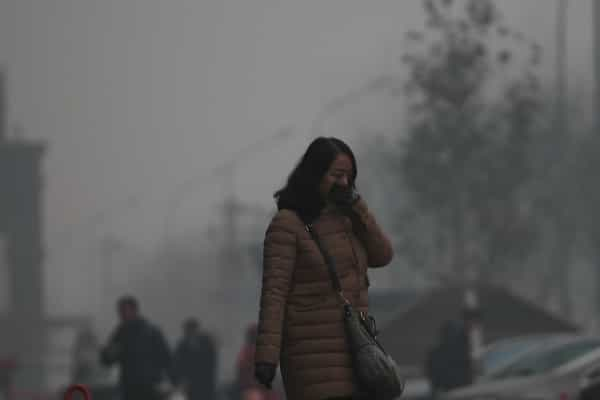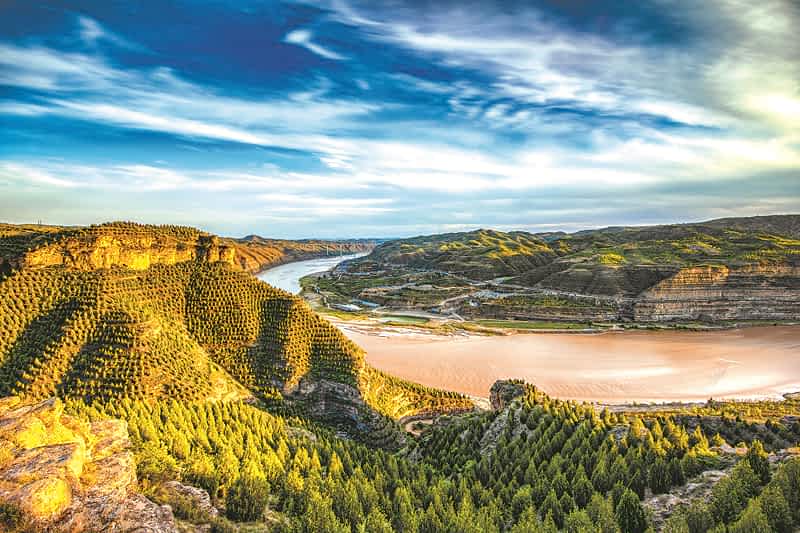Can you imagine: Sky is covered with brown gas. You can’t see anyone five meters away. Your skin feels rough and your nose is filled with sands. No, it isn’t in desert. This situation was common in Beijing, the capital of China, about ten years ago. But nowadays, the improvement of air quality has made Beijing’s environment better.
 November 30, 2015, in Beijing. A lady was crossing the road in the haze. On the same day, Beijing upgraded its heavy air pollution warning to an orange alert. (from Pengpai news reporter Quan Yi)
November 30, 2015, in Beijing. A lady was crossing the road in the haze. On the same day, Beijing upgraded its heavy air pollution warning to an orange alert. (from Pengpai news reporter Quan Yi)
The main pollutant of Beijing was PM2.5 sourced from sand storms and industrial emission. It normally just makes people cough, but it can actually damage peoples’ respiratory system to cause lung diseases. According to WHO, about 7,000,000 people die due to air pollution per year. People needed to wear masks to avoid inhaling damaging particles, especially during winter and autumn.
When it comes to the whole picture of society, the impact is more obvious. Air pollution is against economic and social process. People can’t work if pollution level goes too high. As a result, state machinery was sometimes partly stuck in its heart. “Because of heavy smog, we have been stuck on this highway for three days! We should have finished this job two days ago!” said a freight driver from Jiangsu in 2016. To solve the problem, Chinese people started the largest afforestation project in the world, the Green Great Wall Project. From 1979, about 310,000 square kilometer of forests were planted, forming the Three-North Shelterbelt Forest gradually. An acre of forests can absorb sixty tons of dust annually. They also stop most sand storms.
 The Three-North Shelterbelt Forest in Northern Hebei protects grassland ecosystems and maintains the ecological security of the Beijing-Tianjin-Hebei territory.
The Three-North Shelterbelt Forest in Northern Hebei protects grassland ecosystems and maintains the ecological security of the Beijing-Tianjin-Hebei territory.
To mitigate the effects of industrial emission, Chinese government decided to relocate factories in Beijing. For instance, Shougang Group left Beijing, leaving its estate behind and then building new factories in Hebei province. The prevoius industry zones have been rebuilt to art zones, like 798, and sports centers for the 2022 Winter Olympics.
 The 798 art zone today.
The 798 art zone today.
 The Shougang Ski Jump next to the cooling tower.
The Shougang Ski Jump next to the cooling tower.
Finally, the increase of green space and the removal of factories cleared Beijing’s sky. However, the source of pollution isn’t really gone away. It is just blocked and relocated. To eliminate all pollution, developing new technologies and abiding by the 3R principles are essential, which means China still has a long way to go.
 Hope all of us will share a brighter and greener future together.
Hope all of us will share a brighter and greener future together.